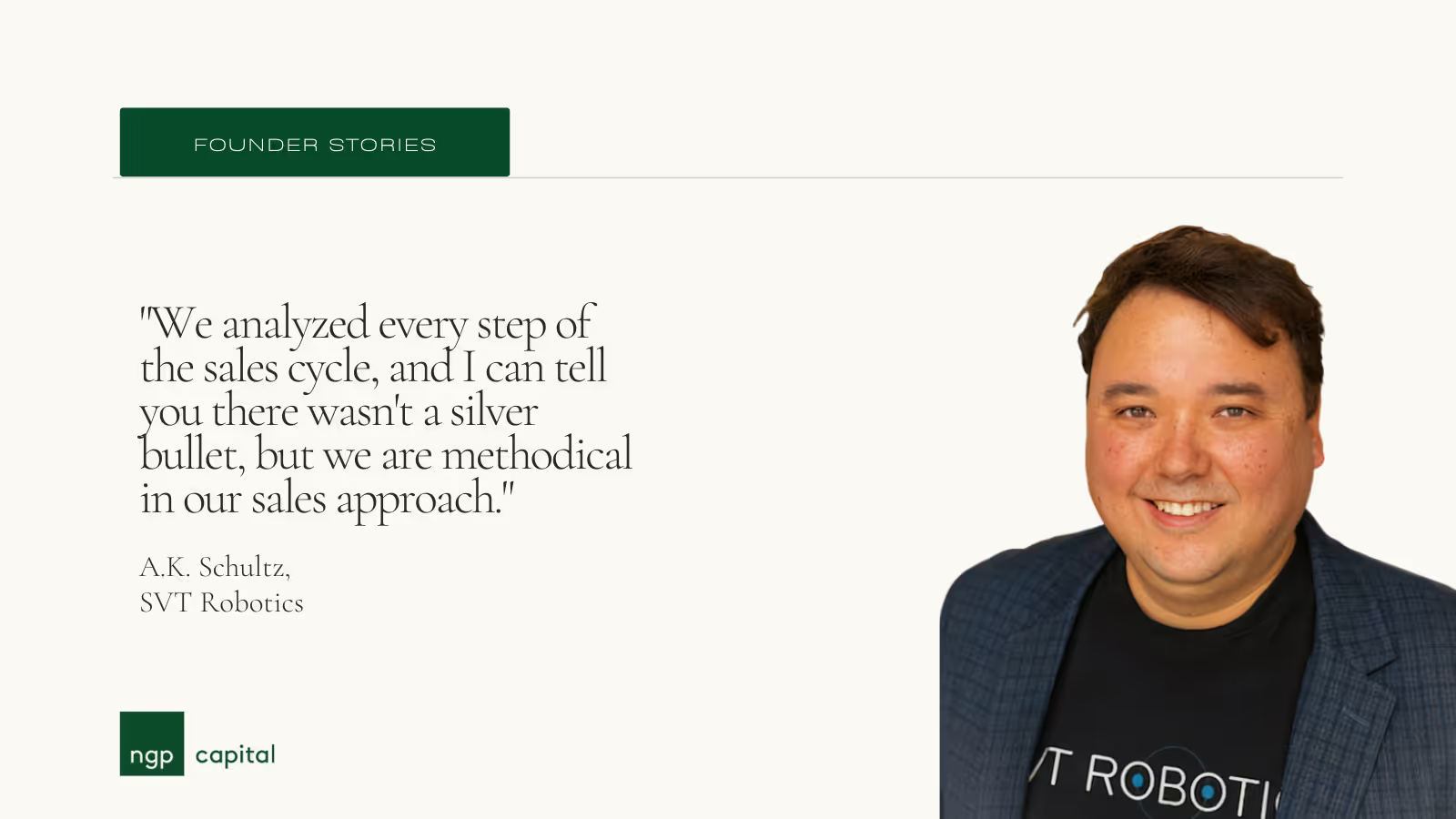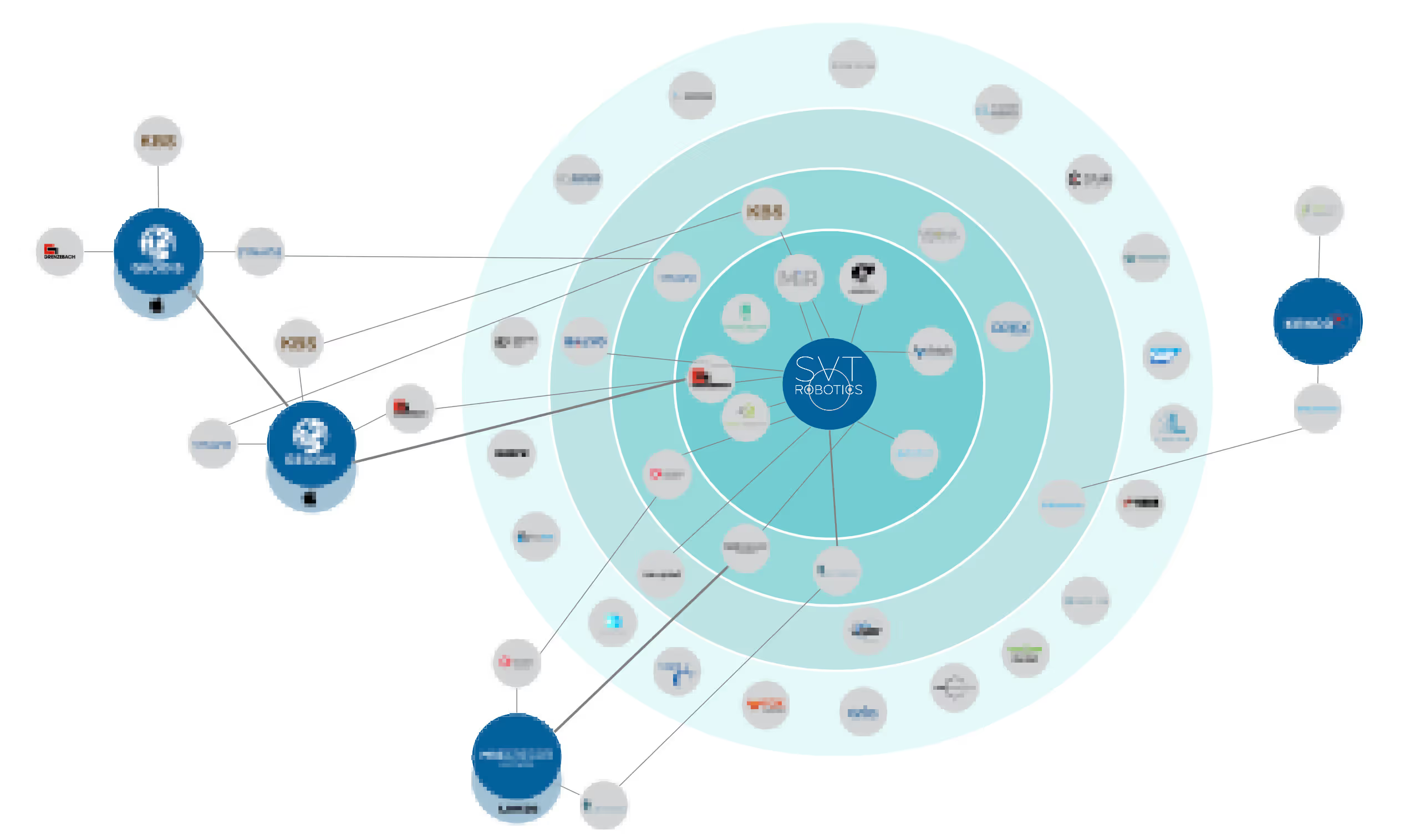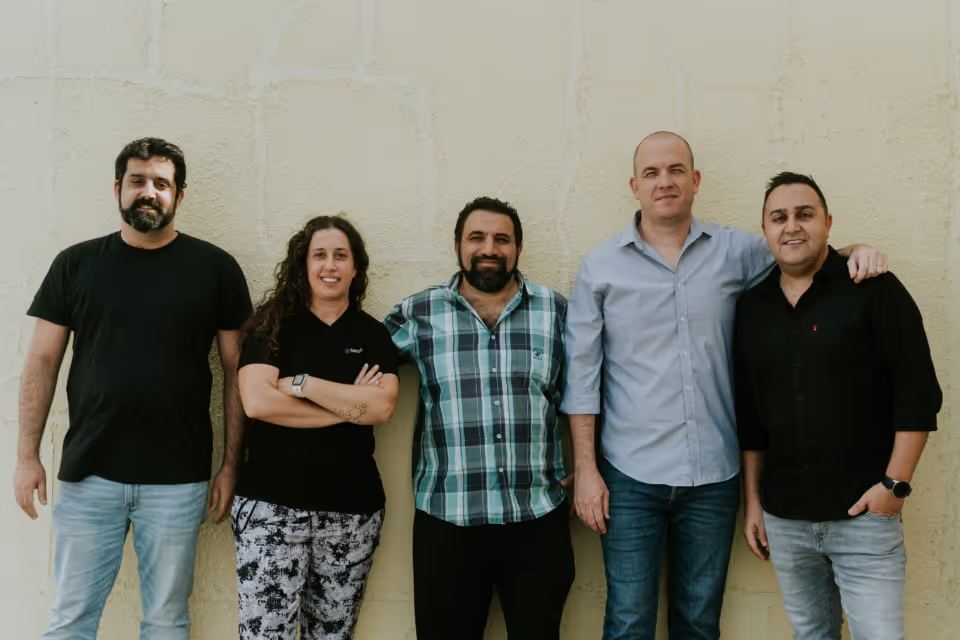Listen now
SVT Robotics, whose software orchestrates and simplifies the integration and deployment of robots within warehouses and factories, has become a category leader in industrial robotics within four years of inception. The company has created an agnostic integration platform called SOFTBOT, allowing its customers to connect any robot to any enterprise solution, in a matter of days.
After participating in SVT Robotics' Series A round in 2021, we sat down with founder and CEO, A.K. Schultz, to uncover the inspiration behind SVT, how the company executed its go-to-market strategy, and what enterprise sales tips he can share with founders.

Tell us a bit about yourself and the original inspiration behind SVT Robotics?
I started in the industry in the early 2000s – back when robotics in warehouses were not a thing. So, for the past 20 years, I’ve been at the forefront of watching the industrial robotics industry blossom – working with a wide range of companies and verticals including retail, pharma, car manufacturing, and even wine.
At one point, I tallied all the projects up and realized I’ve been involved in $750 million worth of automation and robotics projects in my career.
Prior to starting SVT, I did some work at an electric car company based in California. Our company’s portion of this project was huge: my guess is it was approaching around a billion dollars, but it was only a small portion of the total automation project.
I always knew that the company I worked for had created its technology like a walled garden. At the same time, for this project, the company was next to all its competitors – which is a commercial and technical nightmare. More importantly, I saw that the industry’s software is intentionally designed to not be easy to interface with each other on purpose. Looking back at all the struggles we had, this was at the root of many of our problems.
This stuck with me, becoming the basis for my idea: that the interoperability layer for the entire industry—the MuleSoft of robotics if you will—needed to be built.
That’s when we decided to go ahead and solve this super easy problem and build SVT Robotics. And it’s been a wild ride ever since!
When was the ‘AHA moment’ you realized that you were onto something big?
When we raised our pre-seed round from Cowboy Ventures. To be fair, we had some awesome investors early on who were supply chain specialists.
However, with Cowboy Ventures, being a generalist fund who weren't into robotics or supply chain, when they invested on the premise that they believed we could be a $1B company, I realized I was onto something.
It was a very important validating moment for us. When you have that validation suddenly, all doubt is removed, and you move forward with an insanely empowering assurance.
SVT Robotics was founded in 2018, and by 2021 you raised a significant ($25M) Series A, what were the main drivers for such a successful fundraise?
There are a few things that helped. When investors such as Tiger Global, Prologis Ventures, and NGP Capital looked at it, they realized it was a zero-to-one opportunity.
A lot of companies claim they don’t have competitors, but when we first started there was no software category for the robotics industry. Now, Gartner has created a category around this, and we were named ‘Cool Vendor’ by Gartner.
But there is another aspect to this and that's not just the total addressable market, but the LTV is enormous. Because we are a land and expand model, the initial license is just beginning.
As an example, when we bring one or two technologies together, it might be a $30K license but there will be 40 technologies that someone is building and if they want it more integrated, they need to keep adding more licenses. What’s more, if they go to another facility, they must do the same thing, so they end up expanding on two axes.
When you do the math it’s enormous numbers - like a 100 to 1 ratio - from initial contract to full potential.
Once you couple the technology with a massive devotion to customer success, then the land and expand model is just natural.
So, I think when investors saw the LTV to CAC potential, this became their AHA moment.
Some of your key customers are within the warehousing, logistics, and manufacturing space that are known for long sales cycles. What tips and playbooks do you follow to get these customers to embrace your technology?
Now here's the thing. we have this problem in our industry where, if you land a customer and you do a great job for them, they won’t brag about you, meaning your best success stories are hidden behind a vault. The challenge then is how can you create a viral nature?
To bypass this, we created a partner success program and wrote connectors to technologies, which had a great go-to-market effect. Instead of trying to build a direct viral approach, we created a vector-based propagation where our partners become the vector for propagation where they allowed us to bring in more customers. Now, significant inbound is from our partner network.

We also analyzed every step of the sales cycle, and I can tell you there wasn't a silver bullet, but we are methodical in our sales approach. We sanded down all the rough edges and created a frictionless experience so that every single part of the process is automated.
Can you recall a major challenge in your entrepreneurial journey and what key lessons you learned?
Everyone wants to create a category. The dream is to go from zero to one. To create a network effect platform. But I can tell you that, by its nature, a network effect model means you do not have one customer, you have multiple customers with different paradigms and objectives.
This is hard. You need to slog through it.
But once the network effect kicks in, it’s super powerful. It took us two years to acquire the first handful of customers, then only 6 months to triple that. It was like that joke "after several years we were an overnight success", but you know it takes so much to get there!
The other lesson was, thankfully I was a bit naive because I didn’t realize how much harder it was to build a platform instead of a product.
We have this cultural principle at SVT called ‘GoFAd’ - an acronym for ‘go full-assed’- which means we take on very big challenges on purpose and our team embodies that mindset.
How do you see the company evolving in the future?
We were eight people before the pandemic, and since then, more than 70% of our hiring has occurred during the pandemic. It’s made us a fully remote company, which allows us to have optionality in expansion.
More importantly, our focus remains on getting more technologies on the platform to give our customers unfettered access. If we continue to focus on expanding the platform’s capabilities, then more customers can recombine tech and we can continue our momentum.

.svg)






.svg)






